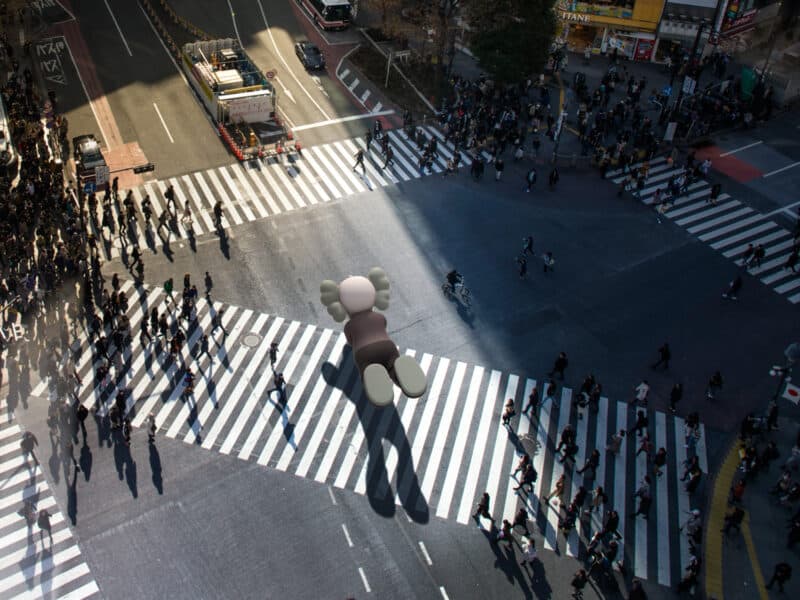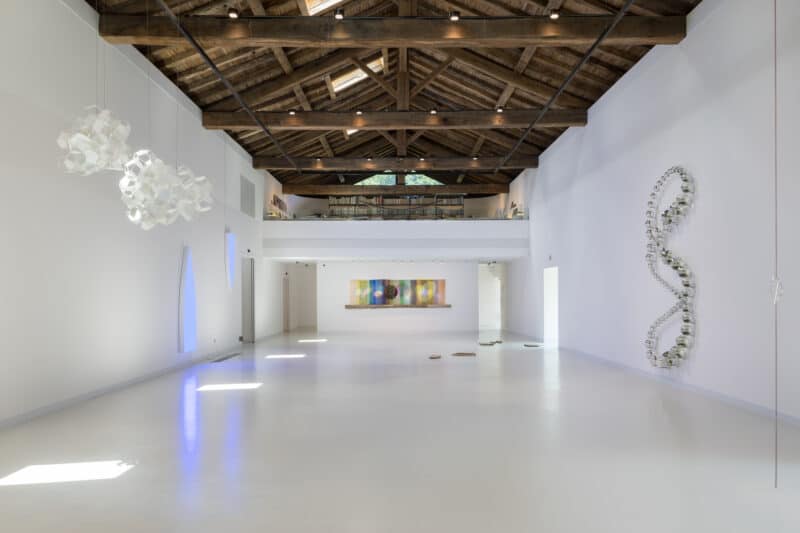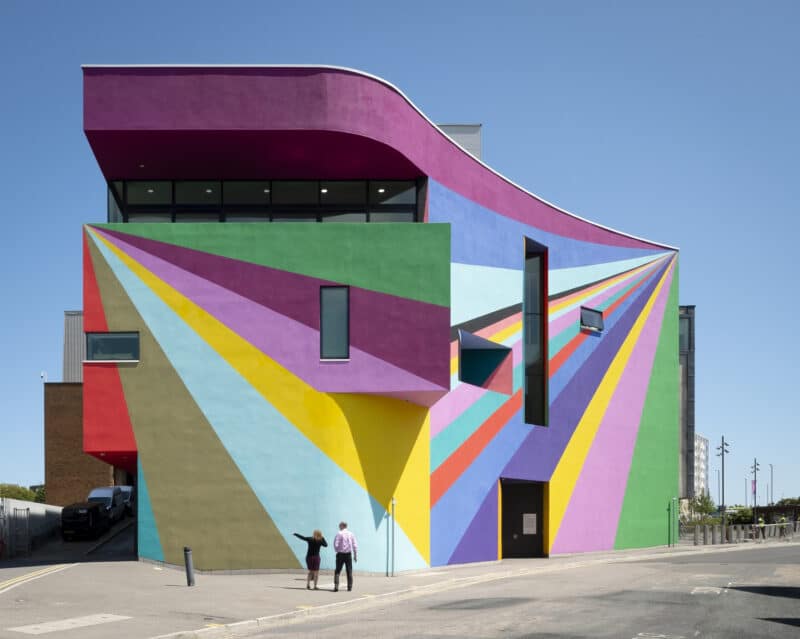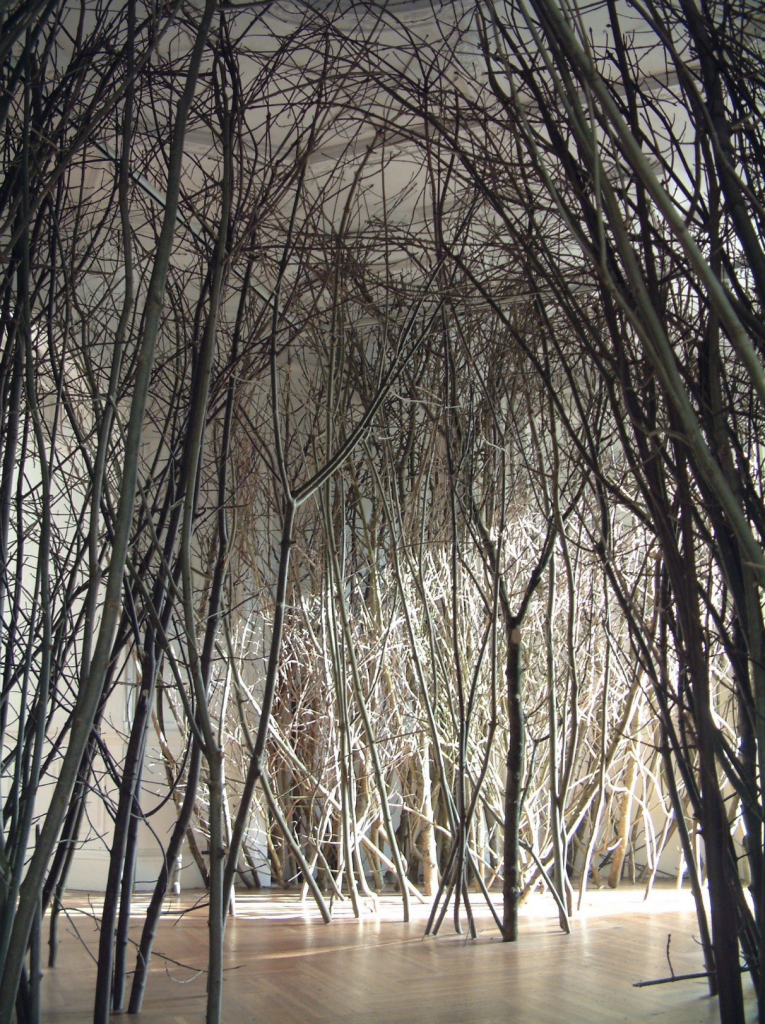
In Spring 2021, Fabrica, Brighton’s Centre for Contemporary Art, will present ‘fairytale installation’, The Forked Forest Path by internationally renowned artist Olafur Eliasson.
This landmark work will be one of Fabrica’s most immersive and memorable exhibitions to date, as it celebrates its 25th anniversary year. Produced in collaboration with Brighton Festival, the exhibition will run from 18th May to 20th June 2021.
Visitors will be immersed in a space filled with branches, saplings and thinnings, combined with a strong, earthy smell reminiscent of a forest floor. All this works to create the illusion of being lost in a densely wooded environment. The Forked Forest Path evokes a strong sense of ‘the woods’ and our relationship to this aspect of nature and human folklore.
The artist’s stipulation for recreating The Forked Forest Path is that exhibitors must source branches and saplings locally and sustainably in order to create it.
As with many of Eliasson’s works, audiences are encouraged to physically engage with it in order to to fully immerse themselves in the experience. In this case, visitors enter via a narrow winding path which forks in the middle of the installation where they must actively choose one path to continue their adventure. Eliasson is known for his commission, The Weather Project (2003), which famously recreated a replica of the sun in Tate Modern’s Turbine Hall among other projects across the world.
The Forked Forest Path evokes a strong sense of ‘the woods’ and our relationship to this aspect of nature and human folklore.
Created in 1998, and one of the artist’s earlier works, The Forked Forest Path is part of Towner Eastbourne’s Collection, a collection with a focus on landscape and environment, among other themes. The work has previously been shown in gallery spaces but Fabrica offers a fresh and different proposition, creating the opportunity for Eliasson’s piece to connect sculpturally and materially with the architecture of the building.
The artist’s stipulation for recreating The Forked Forest Path is that galleries must only use branches and saplings sourced locally and sustainably in order to exhibit in their space.
Fabrica have been working, since 2019, with Foxwood Forestry near Lewes, East Sussex and the Stanmer Park management team, part of Brighton & Hove City Council, to generate the material for the exhibition. When the exhibition closes, the wood will be chipped and recycled as mulch for growing new trees at Stanmer Park.
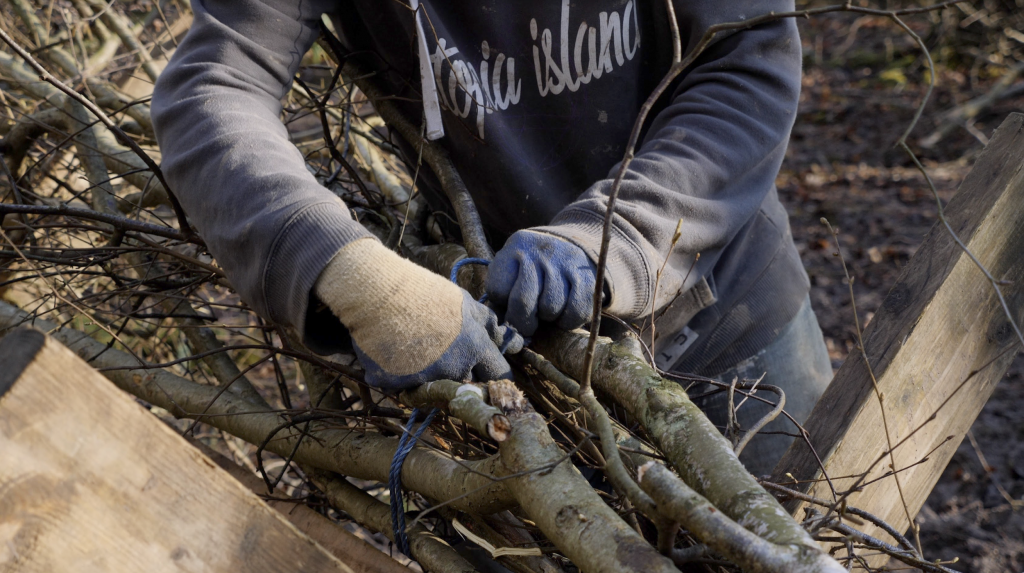
“We are delighted to be able to present this amazing work at Fabrica at the beginning of our 25th anniversary year programme. Through this playful and sensual artwork, visitors will be asked to consider their relationship with nature, their ideas about the countryside and find out about the woods nearby that people can visit for themselves. In the past year, many of us in urban areas have spent so much more of our time outdoors due to the coronavirus measures. If you’ve become a little bored of your regular walks, now is a great time to discover how beautiful, beneficial and biodiverse our local woods are.”
Liz Whitehead, Director, Fabrica
The exhibition is produced in collaboration with Brighton Festival 2021 and The Living Coast (Brighton, Hove and Lewes Downs Biosphere).
The exhibition will launch online from 16th April, see fabrica.org.uk for details
Opening hours from 18th May until 20th June will be Tues-Sun 11 am-6 pm, closed Mon except for May bank holiday. Two artist residencies will take place alongside the exhibition, one with artist Steve Geliot from 12 April-6 June and The Living Coast Residency from 17th May-17th June.
About the artist
Olafur Eliasson’s art is driven by his interests in perception, movement, embodied experience, and feelings of self. He strives to make the concerns of art relevant to society at large. Art, for him, is a crucial means for turning thinking into doing in the world. Eliasson’s works span sculpture, painting, photography, film, and installation. Not limited to the confines of the museum and gallery, his practice engages the broader public sphere through architectural projects, interventions in civic space, arts education, policy-making, and issues of sustainability and climate change.
Eliasson was born in 1967. He grew up in Iceland and Denmark and studied from 1989 to 1995 at the Royal Danish Academy of Fine Arts. In 1995, he moved to Berlin and founded Studio Olafur Eliasson, which today comprises a large team of craftsmen, architects, archivists, researchers, administrators, cooks, programmers, art historians, and specialised technicians.
Since the mid-1990s, Eliasson has realised numerous major exhibitions and projects around the world. In 2003, Eliasson represented Denmark at the 50th Venice Biennale, with The blind pavilion. Later that year, he installed The weather project in Tate Modern’s Turbine Hall, London. Take your time: Olafur Eliasson, a survey exhibition organised by SFMOMA in 2007, travelled until 2010 to various venues, including the Museum of Modern Art, New York. Innen Stadt Aussen (Inner City Out), at Martin-Gropius-Bau in 2010, involved interventions across Berlin as well as in the museum. Similarly, in 2011, Seu corpo da obra (Your body of work) engaged with three institutions around São Paulo – SESC Pompeia, SESC Belenzinho, and Pinacoteca do Estado de São Paulo – and spread out into the city itself. In 2014, Riverbed filled an entire wing of Denmark’s Louisiana Museum of Modern Art with stones and water, emulating a river in a rocky landscape; later that year, Contact formed the inaugural exhibition at Fondation Louis Vuitton, Paris. Verklighetsmaskiner (Reality machines), at the Moderna Museet in Stockholm in 2015, became the museum’s most visited show by a living artist. In 2016, Eliasson created a series of interventions for the palace and gardens of Versailles and mounted two large-scale exhibitions: Nothingness is not nothing at all, at Long Museum, Shanghai, and The parliament of possibilities, at Leeum, Samsung Museum of Art, Seoul. Green light – An artistic workshop, created in collaboration with TBA21 (Thyssen-Bornemisza Art Contemporary), offers a response to the challenges of mass displacement and migration. Originally hosted by TBA21 in Vienna in 2016, the project was part of Viva Arte Viva, the 57th International Art Exhibition – La Biennale di Venezia, in 2017. Eliasson’s site-specific installation Reality projector opened at the Marciano Foundation, Los Angeles, in March 2018, the same month as his solo exhibition The unspeakable openness of things at Red Brick Art Museum, Beijing. In 2019, In real life, a wide-ranging survey exhibition of Eliasson’s artistic practice over the past twenty-five years, opened at Tate Modern, in London, and travelled to Guggenheim Bilbao in 2020. Olafur Eliasson: Symbiotic seeing opened at Kunsthaus Zürich in January 2020 and Sometimes the river is the bridge was shown at the Museum of Contemporary Art Tokyo in spring 2020.
Eliasson has also produced numerous projects in public space. Green river was carried out in various cities between 1998 and 2001. Eliasson designed Serpentine Gallery Pavilion 2007 together with architect Kjetil Thorsen for London’s Kensington Gardens. The New York City Waterfalls, commissioned by the Public Art Fund, were installed along the city’s waterfronts in 2008. Your rainbow panorama, a circular coloured-glass walkway atop ARoS Museum, Aarhus, Denmark, opened in 2011. Harpa Reykjavik Concert Hall and Conference Centre, 2011, for which Eliasson created the facades in collaboration with Henning Larsen Architects, won the Mies van der Rohe Award 2013. Ice Watch brought melting icebergs from Greenland to Copenhagen in 2014 and to Paris on the occasion of the COP21 Climate Conference in 2015. Fjordenhus in Vejle, Denmark, the first building designed entirely by Eliasson and the architectural team at Studio Olafur Eliasson, was completed in June 2018.
As a professor at the Berlin University of the Arts, Eliasson led the Institut für Raumexperimente (Institute for Spatial Experiments; 2009–14), a five-year experimental programme in arts education located in the same building as his studio raumexperimente.net
In 2012, Eliasson and engineer Frederik Ottesen founded the social business Little Sun. This global project provides clean, affordable energy to communities without access to electricity, encourages sustainable development through sales of Little Sun solar-powered lamps and chargers, and raises global awareness of the need for equal access to energy and light littlesun.com
Eliasson and architect Sebastian Behmann founded Studio Other Spaces, an international office for art and architecture, in Berlin in 2014. As an architectural counterpart to Studio Olafur Eliasson in the same building, Studio Other Spaces focuses on interdisciplinary and experimental building projects and works in public space studiootherspaces.net
In 2019 Eliasson was appointed Goodwill Ambassador for renewable energy and climate action by the United Nations Development Programme. Eliasson lives and works in Copenhagen and Berlin. olafureliasson.net


